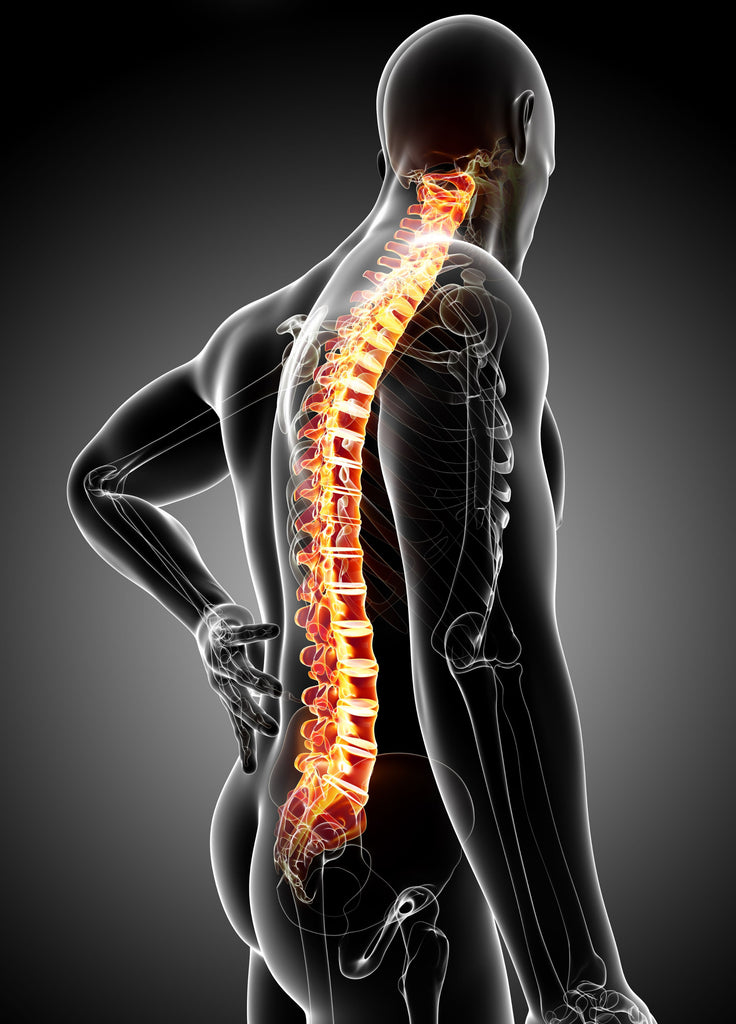What Type of Light Therapy is Used for Pain?
Introduction: The Spectrum of Light Therapy for Pain Management
In recent years, light therapy has emerged as a groundbreaking treatment option for various health conditions, most notably chronic pain. As our understanding of this innovative therapy deepens, the range of applications continues to expand, offering hope to those seeking effective pain relief. For those interested in exploring this avenue of treatment, OrthoJointRelief offers a comprehensive selection of light therapy devices designed to address various types of pain.
Light therapy, also known as photobiomodulation therapy, is not a one-size-fits-all solution. The effectiveness of this treatment varies depending on several factors, including the type of light used, the specific health condition being treated, and even the individual's skin type. This blog aims to provide an in-depth look into the different types of light therapy available for pain management, helping you make an informed decision for your treatment plan.
The Science Behind Light Therapy: Photons, Photobiomodulation Therapy, and Pain Receptors

Understanding the science behind light therapy is crucial for grasping its potential as an effective treatment option for pain. At its core, light therapy involves using specific wavelengths of light to stimulate the body's natural healing processes. This is achieved through photonic stimulation, a process where photons (particles of light) penetrate the skin and interact with the body's cells.
Photobiomodulation Therapy: A Closer Look
Photobiomodulation therapy is a form of light therapy that has garnered significant attention from the scientific community. Developed by Hungarian physician Endre Mester in the late 1960s, this therapy utilises low-level laser therapy (LLLT) or low-level light therapy to stimulate cellular activity. The primary mechanism involves the absorption of photons by cellular mitochondria, leading to increased production of adenosine triphosphate (ATP), the energy currency of the cell. This, in turn, accelerates tissue repair and wound healing, making it particularly useful for conditions involving muscle injury or thermal injury.
The Role of Photonic Stimulation in Pain Management
When it comes to pain management, photonic stimulation plays a pivotal role. The photons interact with pain receptors in the affected area, reducing pain signals sent to the brain. This process also triggers the release of endorphins, the body's natural painkillers, providing immediate relief from discomfort. Moreover, light therapy has been shown to improve blood flow and reduce inflammation, further contributing to its effectiveness in treating a wide array of pain conditions, including nerve pain, muscle pain, and joint pain.
Types of Light Therapy for Effective Treatment of Pain
When it comes to light therapy for pain management, the landscape is rich and varied, offering several types that cater to different needs and health conditions. Understanding these variations is not just beneficial but crucial for selecting the most effective treatment tailored to your specific health condition and symptoms.
Low-Level Laser Therapy, commonly abbreviated as LLLT, is one of the most extensively researched and clinically validated forms of light therapy. Utilising low-level lasers or light-emitting diodes (LEDs), LLLT aims to stimulate cellular activity, particularly in muscle tissue and joints. This form of therapy has gained significant traction for treating a variety of conditions, including arthritis, muscle sprains, and joint pain. The mechanism involves the absorption of light by cellular mitochondria, leading to increased energy production and, consequently, accelerated healing processes.
Soft Laser Therapy is another specialised form of low-level light therapy. Unlike LLLT, it employs a softer, less intense light, making it ideal for different applications. Soft Laser Therapy is often recommended for wound healing and tissue repair, making it an excellent option for individuals recovering from surgical procedures or suffering from muscle injuries. The therapy works by stimulating the body's natural healing mechanisms, promoting faster tissue repair and reducing inflammation.
Infrared therapy employs wavelengths that are longer than those of visible light, allowing for deeper penetration into the body's tissues. This characteristic makes it particularly effective for treating chronic pain, as it can reach deep muscle tissues and bones. Infrared therapy is often used in conjunction with other treatments, such as electrical stimulation, to enhance its pain-relieving effects.
While blue light therapy is most commonly associated with treating skin conditions like acne, recent studies have illuminated its potential effectiveness in treating specific types of pain, particularly nerve pain. The light penetrates the skin to a shallower depth compared to infrared light, making it ideal for surface-level issues. Blue light therapy has also been studied for its effects on mental health conditions, given its ability to regulate mood-related hormones.
Near Infrared Light Therapy is closely related to infrared therapy but operates within a slightly different range of wavelengths. It's often recommended for deep tissue issues, including muscle pain and joint stiffness. Near Infrared Light Therapy has been shown to improve blood flow and oxygenation to the affected areas, contributing to faster healing and pain relief.
Comparing Effectiveness: Which Light Treatment is Best for What Health Condition?
The effectiveness of light therapy is not a one-size-fits-all solution; it varies significantly depending on the specific health condition being treated. Here's a more detailed breakdown:
Nerve Pain and Blue Light Therapy
Blue light therapy has shown considerable promise in treating nerve pain, particularly conditions like peripheral neuropathy. The light's shallow penetration depth makes it ideal for targeting nerve endings close to the skin's surface. Moreover, blue light therapy has been studied for its potential to reduce the symptoms of affective disorders, which often accompany chronic pain conditions.
Muscle Pain and Infrared Therapy
Infrared therapy is often the go-to recommendation for muscle pain because it can penetrate deep into muscle tissues. It promotes blood flow and aids in the faster healing of muscle injuries. The therapy works synergistically with other treatments like photonic stimulation and electrical stimulation to enhance its pain-relieving effects.
Joint Pain and Low-Level Laser Therapy
LLLT has been the subject of extensive research for its effectiveness in treating joint pain, particularly in conditions like arthritis and osteoporosis. The therapy reduces inflammation, improves range of motion, and enhances the body's natural healing processes. It's often incorporated into a broader treatment plan that may include other forms of therapy for pain.
Chronic Pain and Soft Laser Therapy
Soft laser therapy is increasingly used for chronic pain management, particularly for conditions involving soft tissues like ligaments and tendons. It stimulates cellular repair mechanisms, leading to faster healing and much-needed pain relief. Soft laser therapy is often recommended as part of a comprehensive approach to pain management, which may include behavioural therapy and other forms of treatment.
Safety and Side Effects of Light Therapy: A Comprehensive Guide
Light therapy has garnered widespread acclaim for its safety and efficacy in treating various types of pain. However, like any medical intervention, it's crucial to be well-informed about potential side effects and safety precautions to ensure a successful treatment experience.
Adverse Side Effects: What to Watch For and Why
While light therapy is generally considered safe, it's not entirely devoid of risks. The most common adverse side effects are usually minimal and temporary but should not be overlooked. Some individuals, particularly those with sensitive skin types, may experience skin irritation or redness after a session. Others might feel a slight warming sensation during the treatment. While this is generally not a cause for concern, monitoring any unusual sensations and consulting a healthcare provider if they persist is essential.
Adverse Effects on Mental Health: A Closer Look
Light therapy, especially blue light therapy, has been extensively researched for its potential benefits on mental health conditions like Seasonal Affective Disorder (SAD). However, it's crucial to consult a healthcare provider before starting treatment if you have a history of mental health issues. Light therapy could potentially trigger mood swings or other psychological symptoms in susceptible individuals, and professional guidance is strongly recommended.
Safety Precautions and Medical Advice: Steps to Ensure a Safe Treatment
Before embarking on a light therapy journey, it's imperative to consult a healthcare provider for personalised medical advice. This consultation is particularly crucial for individuals with specific skin conditions, those taking medications that increase light sensitivity, or those with a history of mental health issues. Your healthcare provider can offer tailored advice and may even recommend specific types of light therapy most suitable for your condition.
How to Choose the Right Light Therapy Device for Pain Management

Selecting the right light therapy device is not just an important but a critical step in your journey toward effective pain management. Here's an expanded guide on factors to consider:
Different types of light therapy are more effective for specific health conditions, as discussed in earlier sections. For example, infrared therapy is often recommended for deep muscle pain, while blue light therapy is more suitable for nerve pain. Understanding the nuances between different types of light can significantly impact the effectiveness of your treatment.
When choosing a light therapy device, look for features that allow you to customise the treatment according to your specific needs. Some advanced devices offer multiple types of light in one device, providing a more versatile treatment option. Features like adjustable intensity and treatment timers can also enhance your therapy experience.
Consulting a healthcare provider or a professional experienced in light therapy can offer invaluable insights into choosing the right device. They can provide personalised recommendations based on your medical history, specific pain condition, and even your lifestyle. This expert advice can be a game-changer in your treatment journey.
Light therapy devices can be a significant investment, so it's essential to consider your budget. Check if your insurance plan covers light therapy treatments, as this can substantially offset the costs. Some high-quality devices are more budget-friendly but still offer effective treatment options.
Reviews and Testimonials: The Importance of User Feedback
Before finalising your purchase, take the time to read reviews and testimonials from other users. These firsthand accounts can offer real-world insights into the device's effectiveness, durability, and ease of use, helping you make a more informed decision.
Integrating Light Therapy into Your Pain Management Plan: A Comprehensive Guide
Incorporating light therapy into your existing pain management strategy doesn't have to be a daunting task. You can seamlessly integrate this revolutionary treatment into your regimen with careful planning and consultation. Here's a detailed guide on how to do it:
Consult Your Healthcare Provider: The First Crucial Step
The very first step in integrating light therapy into your pain management plan should always be a consultation with your healthcare provider. They can offer invaluable insights into how light therapy can complement other treatments you may be undergoing, such as medication, physical therapy, or even behavioural therapy. This consultation will provide you with a tailored treatment plan that considers your specific health condition and needs.
Start Slow: The Importance of Gradual Integration
If you're new to light therapy, starting with shorter sessions and gradually increasing the duration and intensity as you become more comfortable is advisable. This gradual approach helps you gauge your body's response to the treatment, minimising the risk of adverse side effects and maximising the therapy's effectiveness.
Monitor Your Progress: The Value of Data
Keeping meticulous track of your symptoms, pain levels, and overall well-being can provide invaluable data for both you and your healthcare provider. Consider recording your observations using a pain diary or a dedicated health-tracking app. This information can be instrumental in adjusting your treatment plan, allowing for a more targeted and practical approach to pain management.
Combine with Other Therapies: Synergistic Effects
Light therapy can often be even more effective when combined with other forms of treatment. For example, some people find that light therapy enhances the benefits of physical therapy, medication, or even alternative treatments like acupuncture. The synergistic effects of combining therapies can lead to faster healing and more effective pain relief.
Conclusion
Light therapy has come a long way in recent years, with ongoing research continually uncovering new applications, benefits, and technological advancements. As we look to the future, the prospects for light therapy in pain management are incredibly promising.
The growing body of evidence supporting the effectiveness of light therapy for various types of pain marks it as a revolutionary approach in the field of pain management. Its non-invasive nature, minimal side effects, and adaptability make it an increasingly attractive option for those seeking alternative or complementary treatments to traditional methods.
If you're struggling with chronic pain and are looking for a safe, effective, and scientifically backed treatment option, consider the transformative power of light therapy. Visit OrthoJointRelief to explore a range of high-quality light therapy devices designed to offer you the relief you've been seeking. Don't let pain control your life; take the first step towards a pain-free future today.
Common Queries About Light Therapy for Pain Management: What You Need to Know
When considering light therapy as an effective treatment for pain management, many questions may arise. This section aims to address some of these queries to help you make an informed decision.
What Types of Pain Can Light Therapy Treat?
Light therapy is versatile and can treat various health conditions, including muscle pain, joint pain, and even nerve pain. Different forms of light, such as low-level laser therapy and infrared therapy, target specific conditions effectively.
How Soon Will I Experience Pain Relief?
The timeline for experiencing a reduction in pain can vary depending on the individual and the severity of the chronic pain being treated. Some people report faster healing and relief after just one session, while others may require multiple treatments.
Are There Any Adverse Side Effects or Contraindications?
While light therapy is generally considered safe, being aware of potential adverse effects is essential. People with certain skin conditions, those taking medications that increase light sensitivity, or individuals with specific mental health conditions like affective disorders should consult a healthcare provider before starting treatment.
Can I Use a Light Therapy Device at Home?
Yes, many light therapy devices are designed for home use, offering a convenient treatment option. However, following the manufacturer's guidelines and consulting a healthcare provider for a personalized treatment plan that may include photobiomodulation therapy or electrical stimulation is crucial.
How Does Light Therapy Compare to Other Pain Management Strategies?
Light therapy offers a non-invasive, drug-free alternative to traditional pain management methods. It can be used in conjunction with other treatments like behavioural therapy or as a standalone therapy. Its effectiveness in tissue repair and improving blood flow makes it a compelling option for those seeking alternative treatments.
What Does the Scientific Community Say?
Research in the field of light therapy has been growing, with pioneers like Endre Mester contributing significantly to its acceptance in the scientific community. Ongoing studies continue to explore its benefits in treating inflammatory conditions, muscle injuries, and even thermal injuries.
Author: Ian
Ian Ezra is the Director at OrthoJointRelief. He is a qualified Sports Physical Therapist and has a B.S.C degree in Sports/Physio Therapy. You can read more about him on his about page.


Leave a comment